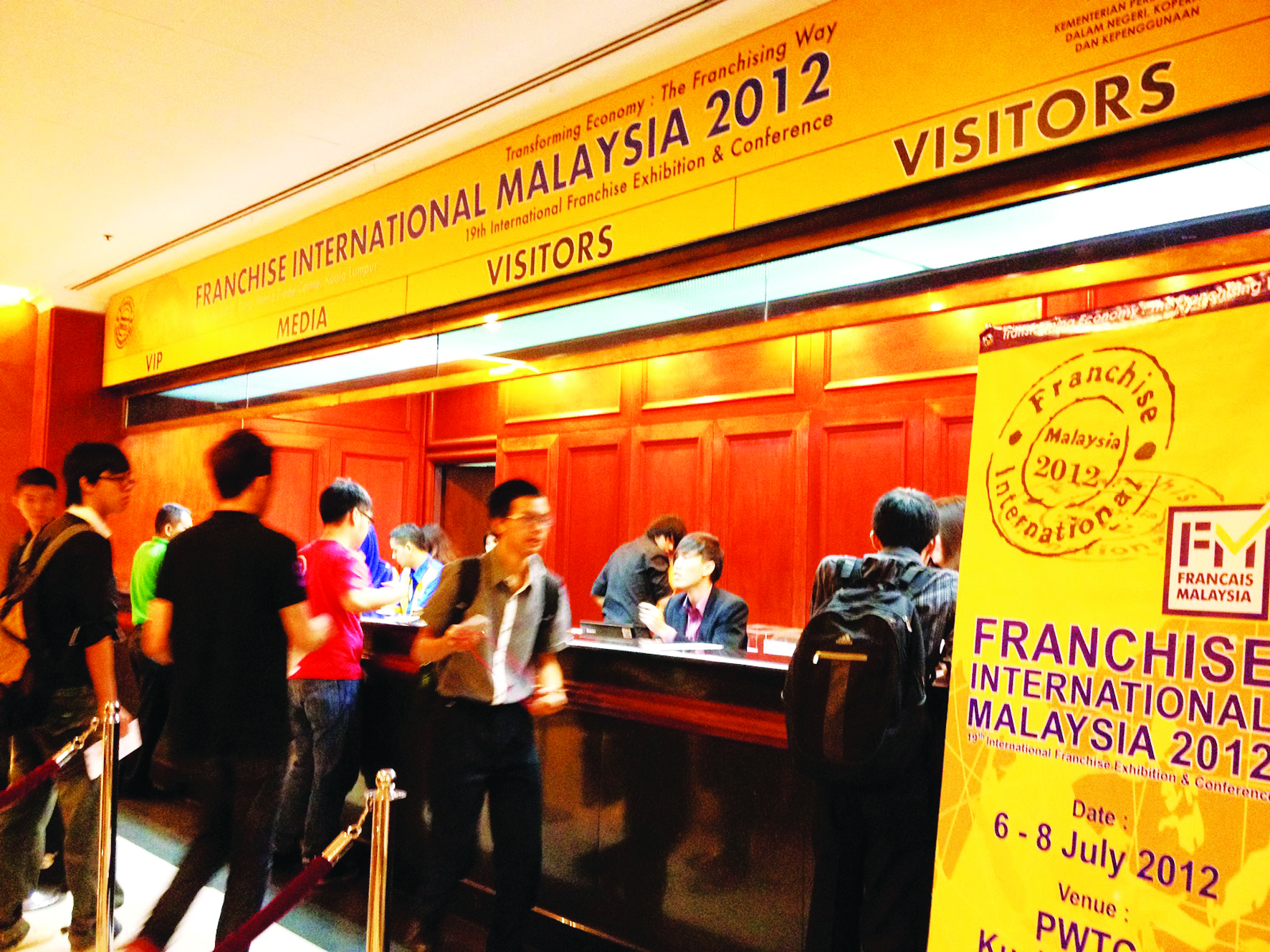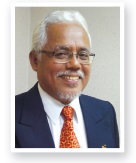 Franchise International Malaysia 2012 was successfully organized in early July this year. This was a important milestone achieved by the sector. The event was organized by the Malaysian Franchise Association (MFA) and the Ministry of Domestic Trade, Cooperatives and Consumerism (MDTCC).
Franchise International Malaysia 2012 was successfully organized in early July this year. This was a important milestone achieved by the sector. The event was organized by the Malaysian Franchise Association (MFA) and the Ministry of Domestic Trade, Cooperatives and Consumerism (MDTCC).
There were a few noteworthy achievements during the year for the franchise sector as announced by the Ministry namely the launching of the franchise blue print; the introduction of MyFex – express online franchise registration process; and the introduction of the micro-franchise development scheme and the international franchise trade missions and promotions. All these are beyond the existing development and financing programmes which in themselves have been instrumental in the achievement of the progress of the franchise sector thus far.
As with any initiatives, the outcomes and results are the real measure of achievement. So far, based on information sourced from the MDTCC’s website, there are a total of 666 registered franchise systems, of which 426 are home grown.
It would seem that the Malaysian franchise sector is doing alright with the registration of franchisors except when we analyse these numbers and determine how many franchisors are actively pursuing the franchising method of expanding their network, then we may be in for a disclosure.
Whilst there have been no reliable reports on how many exactly are active: in recruiting franchisees; how many are dormant as franchisors but still in business; how many are in business at all etc. The numbers of registered franchisors and franchisees are only some measures of growth, we are still not able to establish the contribution of the franchise sector to the economy by way of sales transaction i.e. contribution to the economy, GDP, employment etc.
As expected, the 2012 FIM saw quite a few new franchisors who participated. They are there to create awareness and take a market position in the franchise sector. What is lacking is the participation of ‘old’ registered franchisors. Is this an expression of them not needing the FIM for franchisee recruitment? Or, they feel that they do not need FIM any more to grow their franchise business. Has the FIM become ‘jaded’ and does not create the necessary excitement in the sector any more? These are some of the hard questions that the organizers need to ask themselves. The franchise players on the other hand, have to make known to the organizers that they want a revamped platform.
The profile of exhibitors also indicates that some prominence had been given to the micro franchises. However, they seem to be participating more for the exhibition of their products and services rather than promoting their franchise systems.
It would also seem that the franchise maturity levels of the participating franchise systems are so varied especially when the local franchise systems are compared to the international systems that the locals are still very much playing a catch-up game.
It is the FIM as a platform that will showcase the progress of Malaysian franchise scene but we cannot depend on this annual event alone to asses the performance of the franchise sector. More information on the sector needs to be obtained in order to ‘transform the economy – the franchising way’.
Data and information relating to the numbers (franchisors; franchisees; employment; sales contribution; etc) are critical for the lead organizations to formulate plans for the development of the franchise sector and these numbers are only part of the equation. This is where the franchise annual returns can be put to good use.
There is a need to understand also the non-numbers factors such as motivation to take the franchise route; the value that businesses can add to their business via franchising; the quality of the franchise system; and the good as well as the bad practices etc.
It would seem that the franchise sector needs to address the following in order for the franchise sector to contribute to the transformation of the economy:
• The need to address the dynamics of the climate for franchise development and growth – create a climate for transformation for franchising
There is a need to secure the support of the key power groups in making franchising the priority option for network expansion. Such power groups can come from associations (licensing; retail chains and other groupings that see franchising having lesser importance); government agencies; support institutions etc.
The climate also needs to achieve stability so as to give confidence to business considering adopting the franchising way i.e. the business is certain to a level that they feel that business can be conducted fairly smoothly. If rules and regulations are seen as the main approach towards achieving stability, then franchise players may see them as constraints of doing business.
• The need to motivate businesses to adopt the franchising approach to achieve significant growth – create the pull factors for transformation for franchise stakeholders
In order to create motivation to adopt the franchising approach, there is a need to surface dissatisfaction with the present state of affairs so as to enable businesses to appreciate that their concerns are being addressed.
Participation of key players that can be used as models of success for other would be franchisors would also be important. It would mean that businesses can learn from them and be assured that at least they are not going into franchising ill-informed
Motivation can also come in the form of rewards. The current incentives may not be strong enough to motivate and certainly new aspects need to be considered. Currently for the franchisor, the incentives are mainly for the development of the franchise business. The franchisor need to be motivated during the stability-creation and expansion/growth phases as well.
• The need to assist in the transition phases of the businesses ( e.g. from non franchise > franchise > stability in franchising > growth via franchising > penetrating global markets) – create the push factors for transformation for franchise stakeholders
The assistance that needs to be available should help to manage the smooth transition of the business so as to be able to contribute the transformation of the economy. Existing initiatives need to be coordinated (e.g. to provide relevance to the franchise sector) and given easier access (e.g. simplifying the process).
As the franchise sector covers aspects of entrepreneurial development; business enterprise/organizational development; international expansion; operational excellence etc and crosses into the purview of different ministries, it would be appropriate coordination is established in the form of some organizational arrangements that focuses on franchising. It may also mean there is a need to revamp the existing organizations that facilitate the development and growth of the franchise sector.
Managing the transition also requires some kind of feedback mechanisms. Engagement sessions need to be more frequent with key groups in the franchise sector.
In conclusion, ‘transforming the economy – the franchising way’ need to move beyond a statement that is placed in the promotions materials of the FIM. There is a need for clear leadership within the sector; organized groups or units dedicated to franchising; securing of support from stakeholders who are in position swing opinions about franchising; clear action plans for moving forward and the human capital to move and transform the economy, the franchising way.
 Marzuki Ahmad is the Managing Director and Principal Consultant of Franchise Channel (M) Sdn Bhd. He also sits on the Franchise Advisory Board, which is responsible in advising the Ministry of Domestic Trade, Co-operatives and Consumerism and the Registrar of Franchise on franchising matters.
Marzuki Ahmad is the Managing Director and Principal Consultant of Franchise Channel (M) Sdn Bhd. He also sits on the Franchise Advisory Board, which is responsible in advising the Ministry of Domestic Trade, Co-operatives and Consumerism and the Registrar of Franchise on franchising matters.
For more information, visit www.franchise-channel.com. Marzuki can be reached at marzuki@franchise-channel.com or tel: 03-61426722






